Kashmir’s Beauty: The Valley of Dreams Unraveled (Guide)
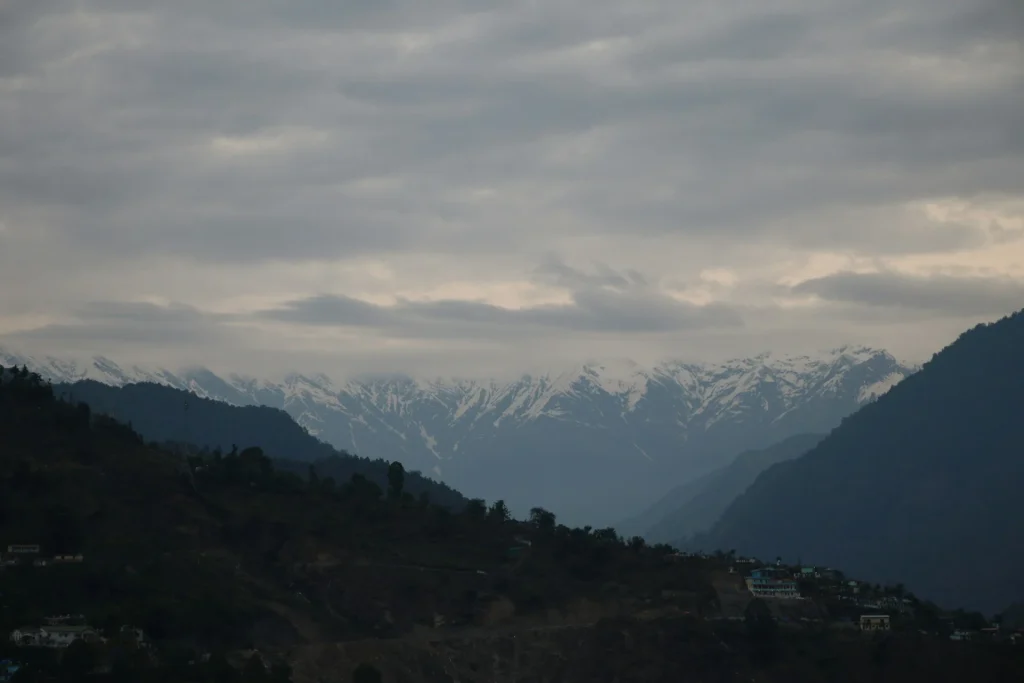
Introduction — The Paradise on Earth There are places you visit, and then there are places that visit you—lingering in your memories long after you have returned home. Kashmir is the latter. Nestled between the potent, snow-clad Himalayas and the stunning Pir Panjal range, Kashmir has long been referred to as Jannat-e-Benazir—”Paradise on Earth.” It is a land where the air smells of saffron and pine, where the morning sun kisses snowy peaks into liquid gold, and where time seems to slow down to the rhythm of a Shikara oar hitting the glassy waters of a lake. But the story of Kashmir goes far beyond its natural splendor. It is a complex tapestry of ancient history, deep-rooted spirituality, exquisite craftsmanship, and a culinary tradition that is a feast for kings. To visit Kashmir is to embark on an interactive adventure through a “Valley of Dreams,” unraveling layers of beauty that have captivated poets, emperors, and travelers for centuries. This guide is your key to unraveling that mystery. From the famous Mughal Gardens to the hidden valleys of Gurez, we will explore the history, nature, culture, and soul of this enchanting region. With the immersive storytelling journeys brought to life by The Tarzan Way, you can navigate this paradise safely and authentically, turning a dream trip into reality. 1. An Intriguing History: The Tapestry of Time Credit: Unsplash Kashmir’s history is not just a timeline of dates; it is a fascinating saga of convergence. The valley has witnessed the reign of historic dynasties, each leaving an indelible mark on the landscape and culture. The Ancient Era Long before it was a tourist destination, Kashmir was a seat of learning and spirituality. It was a pivotal center for Sanskrit scholars and Buddhism. The Mauryas: Emperor Ashoka is credited with bringing Buddhism to the valley in the 3rd century BCE. The ruins of ancient stupas and the influence on early Kashmiri architecture still whisper tales of this era. The Guptas and Karkotas: The Lalitaditya Muktapida era (Karkota Dynasty) saw the construction of the magnificent Martand Sun Temple. Though now in ruins, its pillars still stand against the backdrop of the Anantnag mountains, a testament to the architectural genius of ancient Kashmir. The Medieval Melting Pot Kashmir’s strategic location on the Silk Route made it a hub of trade and culture. The Arrival of Islam: In the 14th century, the arrival of Sufi saint Mir Sayyid Ali Hamadani from Persia changed the cultural fabric of the valley. He brought with him not just religion, but 700 craftsmen who introduced carpet weaving, shawl making, and wood carving—skills that define Kashmiri heritage today. The Mughal Love Affair: Emperors Jahangir and Shah Jahan were besotted with Kashmir. They called it their summer retreat and gifted the valley its most iconic landmarks: the terraced Mughal Gardens (Nishat, Shalimar, and Chashme Shahi). Their influence turned Srinagar into a city of gardens and fountains. This amalgamation of Hindu Shaivism, Buddhism, and Sufi Islam gave birth to Kashmiriyat—a unique cultural ethos of communal harmony and shared traditions that the locals still cherish today. 2. The Enchantment of Nature: A Feast for the Senses Kashmir’s natural splendor is exceptional. It is not just about one view; it is about the diversity of landscapes packed into one valley. Srinagar: The Heart of the Valley Credit: Unsplash The capital city is the soul of the region. Dal Lake: It is the liquid heart of Srinagar. A ride on a Shikara (traditional wooden boat) at sunset is non-negotiable. Watch the floating vegetable markets at dawn, visit the Char Chinar island, and marvel at the intricate wood carvings of the stationary houseboats. Nigeen Lake: For those seeking silence, Nigeen is Dal’s quieter sister. Surrounded by willow trees, it offers a more serene houseboat experience. Tulip Gardens: If you visit in spring (April), the Indira Gandhi Memorial Tulip Garden—Asia’s largest—explodes into a riot of color with over a million blooms set against the Zabarwan hills. Gulmarg: The Meadow of Flowers Credit: Unsplash Located 50km from Srinagar, Gulmarg is a world-class destination. Summer: The meadows are carpeted in wild lupines and daisies. It is a golfer’s paradise, hosting one of the world’s highest golf courses. Winter: It transforms into India’s premier ski resort. The Gulmarg Gondola, one of the highest cable cars in the world, takes you up to Apharwat Peak (Phase 2) for breathtaking views of the Nanga Parbat and endless powder snow for skiing. Pahalgam: The Valley of Shepherds Credit: Unsplash A 3-hour drive from Srinagar, Pahalgam is where the valley opens up into deep pine forests and rushing rivers. Lidder River: The turquoise waters of the Lidder River cut through the town. It’s perfect for trout fishing and white-water rafting. Betaab Valley: Named after the Bollywood movie Betaab, this valley is a postcard come to life with its lush meadows and crystal-clear stream. Aru Valley: A short drive up from Pahalgam, Aru is the starting point for treks to the Kolahoi Glacier and Tarsar Marsar lakes. It is incredibly scenic and peaceful. Sonamarg: The Meadow of Gold Credit: Unsplash The gateway to Ladakh, Sonamarg, is rugged and dramatic. Thajiwas Glacier: Accessible by a short pony ride or hike, this glacier remains snowy even in summer, offering sledding opportunities. Sindh River: The river here is fierce and beautiful, teeming with trout and mahseer. 3. A Destination for All Seasons One of Kashmir’s unique traits is that it changes its “outfit” four times a year. Spring (March-April): The valley wakes up. Mustard fields turn the countryside yellow, almond and cherry blossoms bloom in white and pink, and the tulips arrive. Summer (May-August): The peak season. The weather is pleasant (20-30°C), the meadows are green, and all trekking routes are open. Autumn (September-November): Known locally as Harud. This is a magical time when the majestic Chinar trees turn from green to fiery red and orange. The ground is covered in rust-colored leaves, creating a cinematic atmosphere. Winter (December-February): The valley turns into a white wonderland. It is
Kashmir Essence: The Best Guide to Arts and Crafts Around Dal Lake
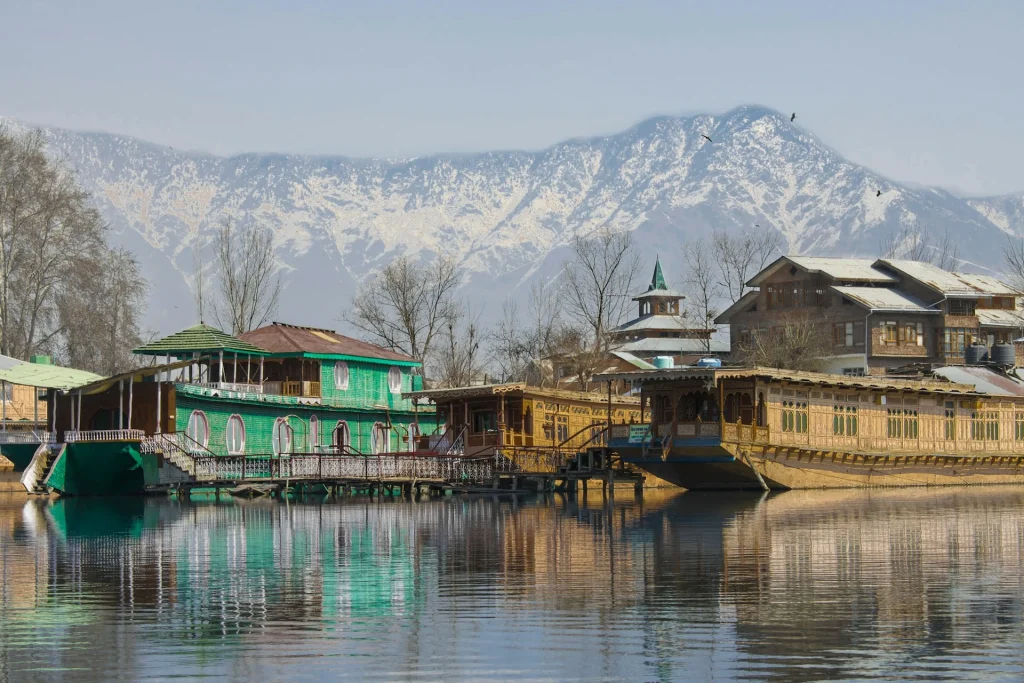
Starting — The Crown Jewel Kashmir is more than just a place to visit; it is a feeling. It is known as Jannat-e-Benazir (Heaven on Earth). The smell of saffron in the cool breeze, the sight of snow-capped peaks in the glassy waters, and the warmth of a Kangri basket on a cold winter morning. The green valleys and adventure trails of Gulmarg and Pahalgam are beautiful, but the real heart of this area is its artistic history. Welcome to Srinagar, the summer capital. The beautiful Dal Lake is more than just a body of water; it’s a floating canvas of culture. Here, in the Zabarwan Range, hands that have learned skills from their parents and grandparents weave, carve, and paint centuries of tradition. This guide will help you find the artistic heart of Kashmir. We will look into the complicated world of Kashmiri handicrafts, go to the floating markets on Dal Lake, and give you an insider’s guide on where to find real treasures, from the busy Boulevard Road to the secret workshops in Anantnag. You can responsibly explore this artistic heritage with The Tarzan Way’s immersive storytelling journeys. This way, your souvenirs will have stories to tell, not just price tags. Key Takeaways The Persian Connection: Learn how the Silk Route and Persian culture affected Kashmir’s unique artistic style, from papier-mache to Khatamband ceilings. Textile Treasures: Find out how to tell the difference between real Pashmina, Shahtoosh, and Semi-Pashmina, and how to use the “ring test” to tell if something is fake. Wood & Willow: Learn about Walnut Wood carving and the native Willow Wicker work (Keani Keam). Life on the Lake: See the floating vegetable markets at dawn and the vendors on Shikaras that move around. Shopping Guide: A carefully chosen list of the best markets, such as Polo View and Lal Chowk, with specific suggestions for where to find metal crafts and dry fruits. Traveller Tips: Important tips on how to haggle, look for GI (Geographical Indication) tags, and stay away from tourist traps. 1. The Legacy: Where Art and Soul Meet Credit: Unsplash Welcome to the magical land of Kashmir, where skill and creativity have kept traditions alive for decades. Kashmir’s handicrafts are not just things to buy; they are living history. Mir Sayyid Ali Hamadani, a Sufi saint from Persia, came to Kashmir in the 14th century. This is when these crafts first started. He brought 700 skilled workers with him who taught the valley how to weave carpets, make shawls, and carve wood. This blend of Persian technique and Kashmiri style made a unique style that is now known all over the world. This rich history can be seen in every piece of silverware, every knot in a carpet, and every stroke of paint on a paper-mâché box. You are holding a piece of the Silk Route when you hold a Kashmiri artefact. 2. Dal Lake: The Floating World Credit: Unsplash Go to Dal Lake, the most beautiful place in Kashmir, where peace and beauty live together. But Dal Lake isn’t just a body of water; it’s a busy city that floats. Not Just Any Body of Water The lake is a beautiful mix of blue waters and lush lotus gardens, hidden away in the breathtaking views of the Zabarwan Range. The Shikara Way of Life: Imagine yourself drifting across its calm waters while the sound of oars hitting the water in time soothes you. Shikaras are like gondolas in India, but they can also be used as stores. As you ride, vendors will row up to you and try to sell you everything from saffron and silver jewellery to warm Kahwa tea and barbecue skewers. The Floating Gardens: These patches of land, called Rad, are made of matted plants and are where locals grow melons, tomatoes, and cucumbers. The Market for Floating Vegetables This is a must-see for people who get up early. From 4:00 AM to 6:00 AM, farmers from the area come to the middle of the lake on their boats to trade and sell fresh fruits and vegetables. It’s a photographer’s dream and one of the few markets like it in the world. 3. Handmade Shawls: Kashmir’s Warmth Credit: Unsplash Learn about the long and interesting history of the famous Kashmir shawl. These beautiful woollen robes, which come from the Persian word “shal,” were popularised in India by Mughal Emperor Akbar, who loved how they looked when they were “draped.” Pashmina: The Soft Gold The Changthangi goat’s undercoat, which is found in the high altitudes of Ladakh, is where pashmina comes from. Real Pashmina is hand-spun and hand-woven. Look for the GI (Geographical Indication) Tag, which proves that the item is real. The Ring Test: People say that a pure Pashmina can fit through a wedding ring. It’s nice to be romantic, but a better test is to look at the weave. Irregular weaves usually mean hand-loom work, while perfect symmetry means machine work. Sozni and Tila Work Sozini (Sozni): This is very fine needlework that is often done on Pashmina to make complicated floral or paisley patterns (Ambemoor). Tila Sozi: A more expensive style that uses gold or silver threads, which are usually used on shawls and pherans (wedding cloaks). 4. The Master Crafts: Wood, Paper, and Carpet Credit: Unsplash Shawls get all the attention, but the hard crafts of Kashmir are just as interesting. Carving Wood from Walnuts The Juglans regia tree, which only grows in Kashmir, makes wood that is strong but easy to carve. The Art: Artisans carve detailed patterns of Chinar leaves, vine creepers, and dragons. What to Get: Look for jewellery boxes, fruit bowls, and, if you can ship it, detailed furniture. The darker the wood is (from the root), the more it costs and lasts. Papier-mâché (Paper Mache) A French word for a Persian art style (Kari-Munaqqash). After soaking, mashing, and drying in moulds, waste paper is painted by hand with bright natural colours and gold leaf. Types: There are two
Himachal Hideouts: Your Guide to Remote Villages & Culture
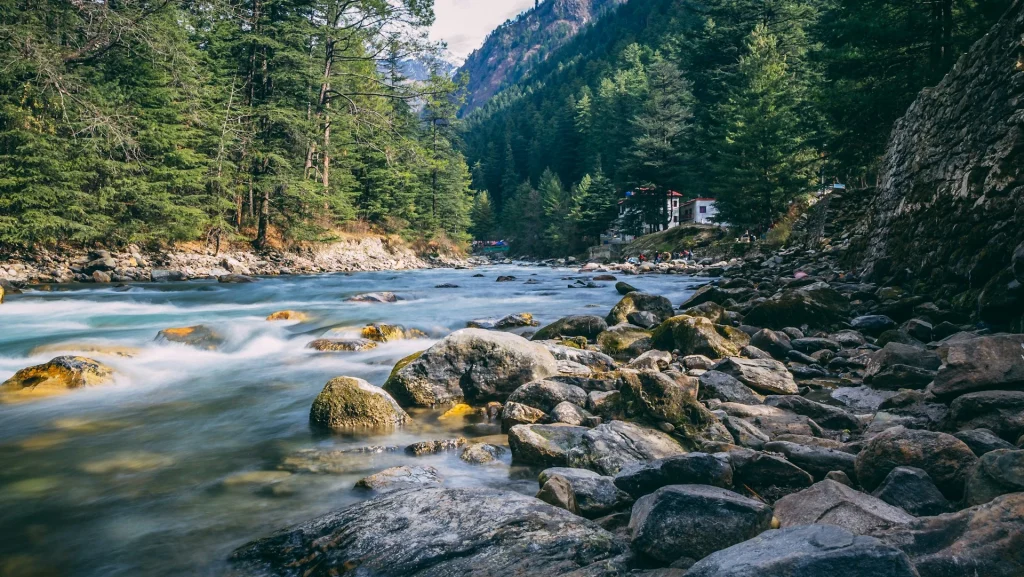
Introduction — Finding the Heart of the Mountains The “Abode of Snow,” Himachal Pradesh, is often thought of as the busy Mall Roads of Shimla and the backpacker cafes of Manali. These places are nice to visit, but the real heart of this Himalayan state is in its quiet villages. The real magic happens in the secret valleys of Kinnaur, the high-altitude deserts of Spiti, and the hamlets of the Tirthan Valley that aren’t on any maps. This guide invites you to leave the tourist trail. It’s for the traveller who wants to connect with people instead of just seeing the sights, who would rather stay in a mud-brick home than a fancy hotel, and who would rather hear temple bells and river currents than traffic noise. We’ll talk about how to fully experience the traditional way of life, get to know the friendly and strong locals, and learn about a culture that has been around for hundreds of years. With The Tarzan Way’s immersive storytelling journeys, you can responsibly explore these remote hideouts, leaving only a light footprint and taking home memories that are full of meaning. Key Takeaways Don’t just look at the map: Find out which remote villages in Kinnaur (like Kalpa and Chitkul) and Spiti (like Langza and Kibber) are considered “offbeat” places to visit. Cultural Immersion: Learn how to “slow travel” by staying in traditional homestays and taking part in daily life in the village. Secrets of Cooking: Try the real flavours of the hills, from the festive Dham to the comforting Thukpa. Don’t just eat instant noodles. Art & Heritage: Learn about the complicated world of Himachali handicrafts, like the well-known Kinnauri shawls and wood carvings. Practical Planning: Get important information about permits, getting around, and road conditions in these remote areas. Inspiration for Future Travel: The mountains are calling now, but we also have an Andaman and Nicobar Islands itinerary to help you plan your next trip to the beach. 1. The Call of Kinnaur: The Land of Apples and Gods Kinnaur is a district with a lot of different landscapes. It connects the lush green valleys of Shimla with the dry, cold desert of Spiti. It is often called “Devbhoomi,” which means “Land of Gods,” because Hinduism and Buddhism live together peacefully there. The Kinner Kailash range surrounds the remote villages here, which are on steep slopes and look out over the Sutlej and Baspa rivers. Kalpa: The Kailash’s Watchman Credit: Unsplash Kalpa is the most famous village in Kinnaur, but its old parts are still a secret place that hasn’t changed in years. You can see traditional stone and wood houses that have stood up to hundreds of years of snow as you walk through the narrow streets of “Old Kalpa.” The vibe is peaceful and spiritual. Seeing the Kinner Kailash peak change colours at sunrise is a spiritual experience. It is thought to be Lord Shiva’s winter home. Cultural Insight: You can see the unique syncretic culture at the 1000-year-old Hu-Bu-Lan-Kar monastery and the Narayan-Nagini temple. Chitkul: The Last Town Credit: Unsplash Chitkul, which is in the Baspa Valley (Sangla Valley), is well-known as the “last inhabited village” on the border between India and Tibet. Studies show that the air here is the cleanest in India. The landscape is full of pink buckwheat flowers and golden potato fields. The Vibe: Peacefulness at the end of the world. The Mathi Devi temple is the centre of village life. It has beautiful wood carvings. Activity: Sit by the Baspa River and watch the locals weave wool in the winter sun. Nako: The Lake Village Credit: Unsplash The land becomes dry as you go up to upper Kinnaur. Nako is a historic village that is built around a holy lake. The village is a maze of stone houses and narrow streets, with prayer wheels turning in the breeze. The vibe is old and magical. It looks like a movie set from a different time. 2. Accepting Traditional Life in Spiti Valley If Kinnaur is the way in, Spiti (“The Middle Land”) is the place to go to really get away from it all. This cold desert is high up and between Tibet and India. It’s a great place for people who want to really experience a different culture. Things are tough here, but people are very friendly. Langza: The Village of Fossils Credit: Unsplash Langza is known for two things: its beautiful views and its prehistoric marine fossils. The valley is dominated by a huge golden statue of the Buddha. The Tethys Sea covered the Himalayas millions of years ago, and you can still find spiral fossils (Ammonites) here. Stay in a mud-brick house for an experience. The toilets use dry composting, which is good for the environment, and the tandoor, or central wood-burning stove, heats the house. The Snow Leopard’s Home in Kibber Credit: Unsplash Kibber used to be the highest village in the world that you could drive to. It is made up of white-washed houses set against brown mountains. It is the starting point for the Kibber Wildlife Sanctuary, which is home to the rare Snow Leopard, also known as the “Ghost of the Mountains.” Experience: Spend a week here in the winter with local spotters to find the snow leopard. It tests your patience and strength. Demul: The Sustainable Model Demul is a great example of tourism that is based on the community. The village has a system in place to make sure that all the families get an equal share of the money that comes from tourism. Experience: Take part in a “village life” experience by herding yaks, working in the pea fields, and learning how to make Arak (a local barley brew). 3. Other Remote Hideouts Besides the Map Himachal has more hidden places than just Spiti and Kinnaur. Barot Valley: A Fisherman’s Dream Barot is a hidden gem in the Mandi district that was built for a hydel project. You can get to it by
Himachal Travel Guide: Best Waterfalls and High Peaks
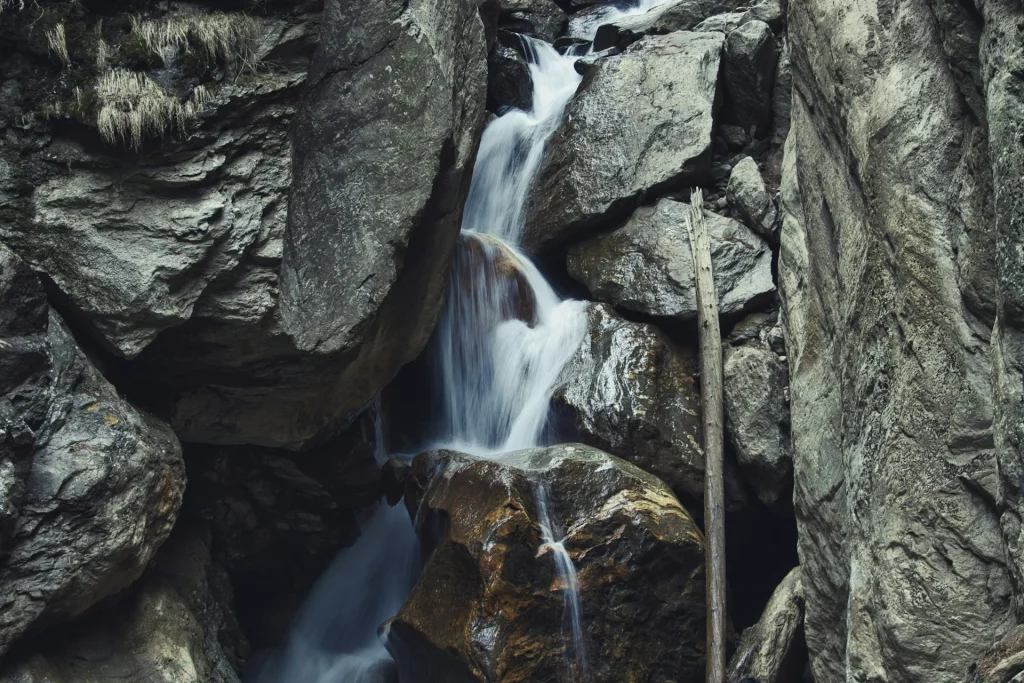
The Call of Water and Stone: An Introduction Take a trip through the beautiful landscapes of Himachal Pradesh that will touch your heart. This is a place where two powerful forces of nature will amaze you: waterfalls that flow down and peaks that are strong and unyielding. The geography of this place, the Devbhoomi, or “Land of the Gods,” tells a story of differences. As you hike to a beautiful waterfall, you can feel the mist on your face in the lush, easy-to-reach valleys. The water falls in a way that sounds like music. But just above, the silent, powerful giants—the high-altitude peaks—remind us of the thrill of adventure and the raw power of the Himalayas. This guide is the best way to get around in both of these worlds. We will look at the most beautiful, easy-to-reach, and secret waterfalls that are great places to relax away from the noise of everyday life. Next, we’ll look up at the hard, snow-covered peaks that call to the adventurer in all of us. This is your complete guide to chasing water and stone, from the calm pool of Bhagsunag to the technical “Rain God’s throne” of Indrasan. The Tarzan Way brings stories to life in a way that makes it easy to explore both the lush forest trails and the high-altitude expeditions. This turns a simple trip into a story that lasts a lifetime. Key Takeaways A Guide to Himachal’s Waterfalls: Learn about the top five waterfalls, from the well-known (Bhagsunag) and easy-to-reach (Jibhi) to the lesser-known (Riva). Learn about five major peaks in Himachal, from easy-to-climb ones like Shitidhar to very technical ones like Indrasan. Two Adventures, One State: This guide has everything from easy, misty day hikes to waterfalls to hard, multi-week mountaineering trips. Key Locations: We’ll look at places in and around well-known areas like Shimla (Chadwick, Riva), Manali (Jogini), Mcleodganj (Bhagsunag), and the Tirthan Valley (Jibhi). Trek vs. Climb: Know the difference between a “trek” to a waterfall and an “expedition” to a peak, and what each one needs. Responsible Travel: Learn how to be a responsible traveler by following these important tips that will help you respect the local culture and environment while you travel. 1. The Tirthan Valley Oasis is the Jibhi Waterfall Credit: Unsplash The village of Jibhi is a hidden gem in the peaceful Tirthan Valley, and its waterfall is what makes it so special. This is one of the most beautiful and easy-to-reach waterfalls in Himachal, making it great for families and people who just want to hike. The path to the waterfall is just as beautiful as the waterfall itself. It goes over cute wooden bridges and through a thick canopy of pine trees. The waterfall isn’t very big, but it’s very pretty as it flows over rocks into a clear pool. The area is very well-kept, and there are places to sit and meditate that make you want to do so and take in the peaceful atmosphere. Advice for Travelers Getting there: It’s a short walk from the road, about 10 to 15 minutes, and it’s good for people of all ages. Best Time: Go in the morning when there aren’t many people there. The light that comes through the trees is beautiful. What to do: Go for a swim in the cool, refreshing pool. Some local businesses offer waterfall rappelling for those who want to try something new. Combine It: To see everything in Tirthan Valley, go to the nearby Jalori Pass or Serolsar Lake. Quick Facts Jibhi, Tirthan Valley is where it is located. How hard is the trek? Very easy. The best time to go is from March to June and from October to November. Vibe: Peaceful, clean, and just right for Instagram. 2. The Bhagsunag Waterfall is McLeodganj’s most famous landmark Credit: Unsplash You can’t go to McLeodganj or Dharamshala without seeing the Bhagsunag Waterfall. This is one of the most well-known and social waterfalls in the state. The trip starts at the old Bhagsunag Temple, which is dedicated to Lord Shiva. A well-paved trail that is 2 km long goes up the hill from the temple. There are lots of small cafes and shops along the path, which makes the hike more fun. The waterfall is a beautiful 30-foot cascade that flows down a rocky cliff. It is especially strong during the monsoon. You can cool off by jumping into the natural pool at the bottom. Tips for Travelers The Cafes: “Shiva Cafe,” which is just above the waterfall, is the most well-known place here. It has beautiful views and a classic hippie feel. Shoes: The path is paved, but it can be slippery. Put on shoes that have a good grip. Go Further: The trail past Bhagsunag goes all the way to Triund, which is one of Himachal’s most famous hikes. There are a lot of people here. Get there early in the morning to avoid the crowds. Quick Facts Location: McLeodganj, which is close to Dharamshala How hard is the trek? Easy to moderate. The best time to visit is from July to October, when the flow is at its highest, but you can go all year. Vibe: busy, social, and spiritual. 3. The Spiritual Trek from Manali to Jogini Waterfalls Credit: Unsplash Jogini Waterfalls is a spiritual and natural delight. It’s a short, beautiful hike from the village of Vashisht, which is known for its hot springs, near Manali. The 3-kilometer hike to get there is a highlight in and of itself, not just the destination. The trail goes through apple orchards, small houses in villages, and pine forests, and it crosses a few small streams. You will hear the waterfall before you see it. The main waterfall drops 150 feet with a loud bang and is surrounded by thick green plants. After the hike, the mist from the falls is very refreshing. The Jogini Mata Temple, which is at the base, is a holy place for the people who live
Unveiling the Hidden Gems of Himachal Pradesh
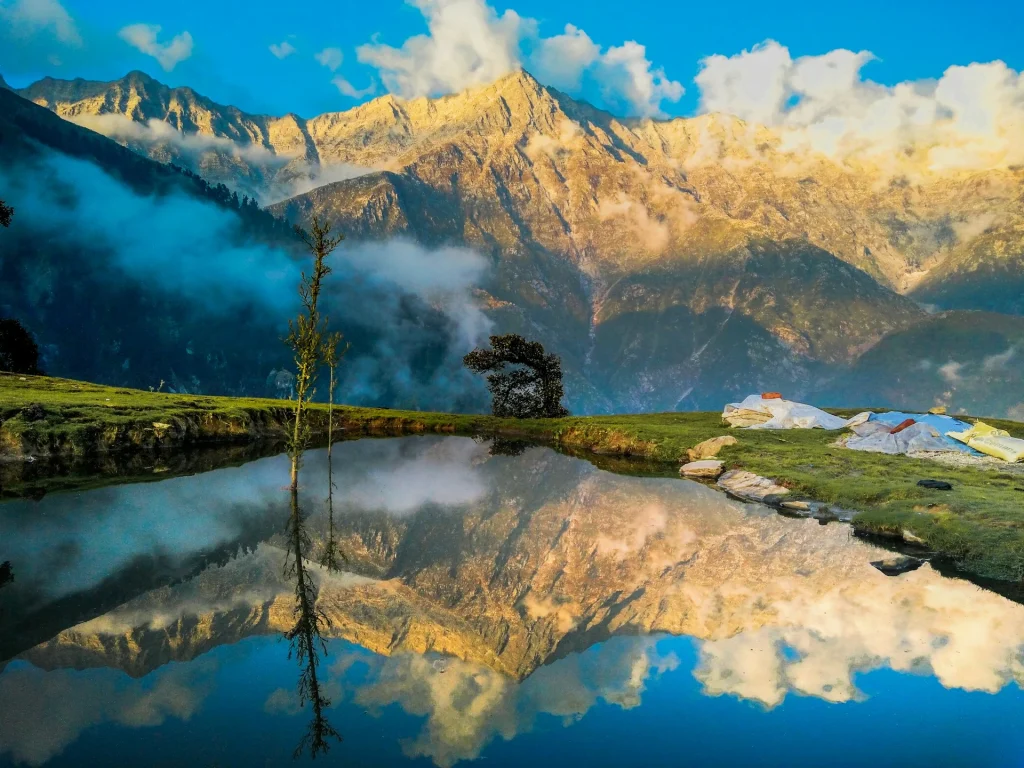
Introduction — Beyond Shimla and Manali When most travelers picture Himachal Pradesh, they see the bustling Mall Road of Shimla or the crowded cafes of Old Manali. But beyond these popular hubs lies a vast, untouched wilderness—a land of remote villages tucked away in high-altitude deserts, serene lakes that reflect the heavens, and ancient cultures that have remained unchanged for centuries. This is the Devbhoomi, or “Land of the Gods,” in its rawest, most authentic form. For the traveler willing to step off the beaten path, Himachal offers a unique and profound experience. This guide is your key to unlocking these secrets. We will journey to the enigmatic village of Malana, explore the riverside sanctuaries of Tirthan Valley, trek across dramatic mountain passes, and find tranquility in the moon-like landscapes of Spiti. With the immersive storytelling journeys brought to life by The Tarzan Way. you can explore this hidden side of Himachal responsibly, connecting with the culture and landscapes in a way that is both sustainable and unforgettable. Are you ready to discover the Himachal that most tourists miss? Let’s begin. Key Takeaways Explore Hidden Valleys: Discover destinations beyond Kullu-Manali, including the UNESCO-listed Tirthan Valley, the apple orchards of Kinnaur, and the high-altitude desert of Spiti. Discover Unique Cultures: Learn about the mysterious and isolated village of Malana, with its own ancient democratic system, and the unique Hindu-Buddhist syncretic culture of Lahaul & Kinnaur. Trek Offbeat Trails: This guide covers treks for all levels, from the accessible Prashar Lake trek to the beginner-friendly Hampta Pass and the expert-level Pin Parvati Pass. Find Serene Vistas: Find peace at high-altitude lakes like Chandratal and Prashar, or in the “Mini-Switzerland of India,” Khajjiar. Plan Like an Expert: Get essential tips on permits, acclimatization, the best seasons to travel, and how to explore these remote regions responsibly. Travel Responsibly: Learn how to engage with local communities respectfully, minimize your environmental impact, and support sustainable tourism with partners like The Tarzan Way. 1. Malana: The Enigmatic Village of Mystery Credit: Unsplash Tucked away in a remote side valley of the Parvati Valley, Malana is one of the most fascinating and enigmatic hidden gems in all of India. This ancient village is known for its distinct and isolated culture, unique social customs, and a powerful village deity, Jamlu Devta, who governs all aspects of life. The people of Malana are believed to be descendants of Alexander the Great’s army, and they guard their traditions fiercely. The village has its own language, Kanashi, and operates one of the oldest democracies in the world. Its most famous (or infamous) rule is the “no-touch” policy, where outsiders are forbidden from touching any local person, temple, or sacred object, reinforcing its sense of mystery. Traveler’s Tips Respect is Non-Negotiable: You must not touch any local resident, temple, or artifact. Fines are imposed. Photography: Always ask for permission before taking photos of people or private property. Stay: Accommodations are basic guesthouses located outside the main village. Access: The village is reached via a short but steep 4-km trek from the nearest road head. Why It Attracts Travelers It’s a journey into a living-history museum. Malana’s allure is its profound mystery, its isolation, and the rare chance to observe an ancient, self-contained culture that has resisted the modern world. Quick Facts Location: Parvati Valley, Kullu District Known For: Malana Cream, Jamlu Devta, “no-touch” policy Best Time to Visit: May to October (avoid monsoon) Experience Level: Moderate (requires a trek) 2. Tirthan Valley & Jibhi: The Riverside Sanctuaries Credit: Unsplash For those seeking pristine nature without the extreme altitudes of Spiti, Tirthan Valley is a perfect choice. As the gateway to the Great Himalayan National Park (GHNP). a UNESCO World Heritage Site, this valley is an eco-tourism hotspot. The Tirthan River, a tributary of the Beas, flows through it, crystal-clear and teeming with trout. The valley is dotted with charming riverside homestays, campsites, and the picturesque village of Jibhi, known for its traditional wooden houses and nearby waterfalls. It’s the ideal place for a “slow travel” experience—spend your days trout fishing, hiking to hidden waterfalls, or simply reading a book by the river. Traveler’s Tips Trout Fishing: This is one of the best places in India for trout fishing. You must obtain a permit from the forest department. GHNP Treks: Numerous short treks into the eco-zone of the Great Himalayan National Park start from here. Digital Detox: Mobile and Wi-Fi connectivity can be very spotty, making it a perfect place to disconnect. Why It Attracts Travelers It’s an accessible paradise for nature lovers. It offers a perfect blend of relaxation (riverside homestays) and adventure (GHNP treks) in a protected, pristine environment. Quick Facts Location: Kullu District (near Aut) Best Time to Visit: March to June, October to November Must-Do: Jibhi Waterfall, Serolsar Lake trek Known For: Trout fishing, GHNP, traditional Kath-Kuni architecture 3. Kangra Valley: History, Art, and Paragliding Credit: Unsplash The lush, green Kangra Valley is often overlooked in favor of its more famous neighbor, Dharamshala, but the valley itself is a vast treasure trove. It’s home to the imposing Kangra Fort, one of the oldest and largest forts in the Himalayas, which offers panoramic views of the valley. The region is also famous for its sprawling tea gardens, particularly in Palampur. But the real gems are the artistic and adventure hubs. Andretta is a tiny village known for its pottery studio, while Bir-Billing is globally recognized as the paragliding capital of India, offering world-class tandem flights. Traveler’s Tips Paragliding: The best season for paragliding in Bir-Billing is October-November and March-May. Art & Culture: Visit the Andretta Pottery studio (try your hand at the wheel) and the ancient rock-cut Masroor Temples. Toy Train: For a scenic, slow journey, take the Kangra Valley Railway (a UNESCO heritage “toy train”) that runs from Pathankot to Paprola. Why It Attracts Travelers It’s the sheer diversity. In a single region, you can experience adrenaline-pumping paragliding, explore ancient history at Kangra Fort, appreciate art at Andretta,
Exploring The Exquisite Flavors Of Kerala: A Culinary Odyssey
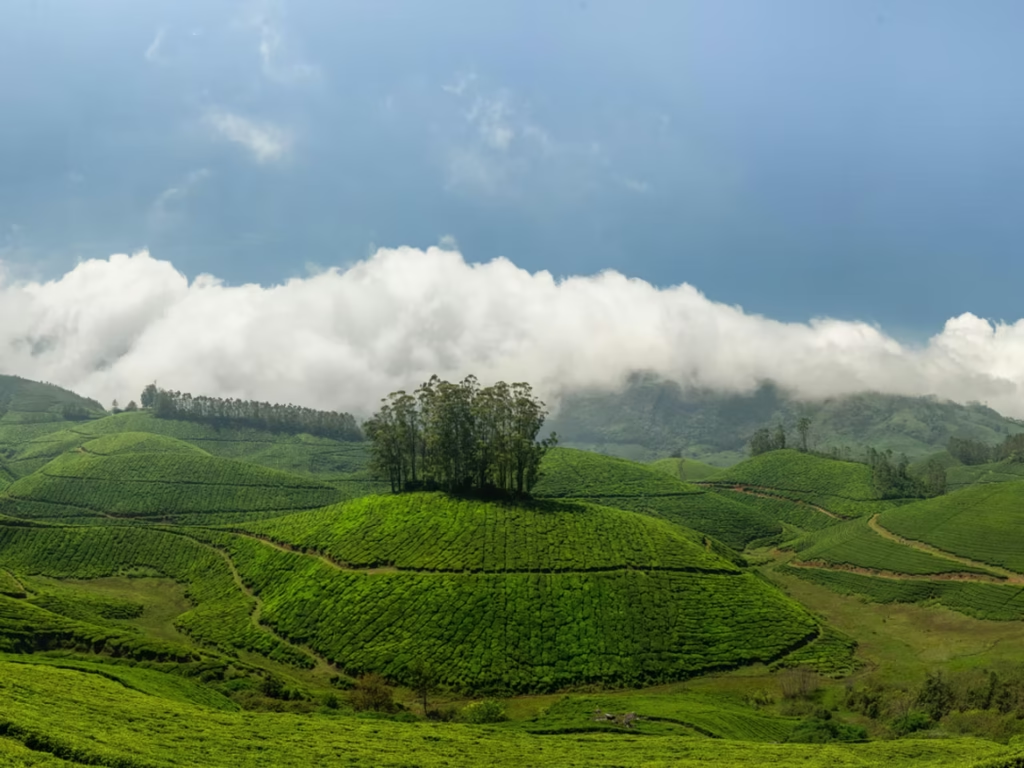
Embark on a gastronomic journey through the flavors of Kerala with our AI-enhanced culinary guide. From traditional spices to coastal delicacies, savor the best of Kerala cuisine. Introduction: The Rich Culinary Heritage Of Kerala Kerala, a state located in the southern region of India, is renowned for its rich and diverse culture, enchanting landscapes and warm hospitality. But one aspect of this beautiful land that often goes unnoticed is its flourishing culinary heritage. The food of Kerala is as captivating and varied as its people, with influences from different cultures dating back to ancient times. From fragrant spices to fresh seafood, every bite in this picturesque state is an explosion of flavors that will leave your taste buds wanting more. Keep reading to know more! Backwaters of Kerala From Sea To Plate: Exploring Kerala’s Coastal Cuisine Kerala’s long coastline along the Arabian Sea has not only blessed it with breathtaking views but also a unique and diverse cuisine that has been influenced by various cultures over centuries. From seafood to coconut-based dishes, Kerala’s coastal cuisine is a true reflection of its rich cultural heritage and natural resources. Kerala Chemmeen (Prawns/Curry) Appam and crab masala Karimeen Pollichathu Oyster Ethakka Thoran A Vegetarian’s Paradise: Taste The Delights Of Onam Sadya This traditional feast is a must-try for any food lover, especially vegetarians. Onam Sadya is a grand meal served during the festival of Onam in Kerala. It consists of an elaborate spread of over 20 different vegetarian dishes, all made with fresh and local ingredients. From flavorful curries to crispy papadums, every dish has its own unique taste and complements each other perfectly. And the best part? It’s all served on a banana leaf, adding a touch of eco-friendliness to this culinary experience. Following are the top 5 mouthwatering dishes part of the Onam sadya spread: 1)Thoran: It is a stir fry vegetable dish made of either cabbage, beans, raw jackfruit or carrot and grated coconut. Thoran 2)Olan: A mixture of white pumpkin, coconut milk and cow peas, olan can be served with steamed rice or red rice. Olan 3)Upperi or Sarkara Varatti: Add a sugary twist to the banana chips and you have upperi. Upperi or Sarkara Varatti 4)Ada Payasam: Ada Pradhaman is a traditional Kerala payasam prepared with jaggery coconut milk and rice ada or rice flakes. Ada Payasam 5) Puli Inji: Puli Inji is a sweet and sour ginger pickle made of tamarind, ginger and jaggery, served as an appetiser in Sadhya. Puli Inji The Art Of Pickling And Preserving In Kerala One of the most beloved aspects of Kerala’s cuisine is the art of pickling and preserving. This traditional method of food preservation has been passed down through generations in Kerala, resulting in an array of flavors. The process involves using a variety of spices, oils, and vinegars to create mouth-watering pickles that can be enjoyed for months on end. From fiery mango pickle to tangy lemon pickle to sweet and spicy mixed vegetable pickle, there is no shortage of options when it comes to pickled delights in Kerala. These special preserves not only add flavor to meals but also have numerous health benefits as they are packed with probiotics and essential nutrients.. Pickles Influences From Around The World: Fusion Dishes In Kerala’s Cuisine One of the most unique aspects of Kerala’s cuisine is its fusion dishes. The state, situated in the southern part of India, has been a major trading hub for centuries and has welcomed influences from around the world. This is reflected in its cuisine, which blends Indian ingredients and cooking techniques with flavors from various cultures such as Chinese, Portuguese, Dutch, and Arab. These fusion dishes add an exotic touch to the already diverse cuisine From spicy and tangy curries to mouth-watering seafood delicacies, the fusion dishes in Kerala are a must-try for food enthusiasts looking to embark on a culinary odyssey through this beautiful state. 1) Meen Moilee: A coconut milk-based fish curry with influences from Portuguese and Dutch cuisines, featuring Kerala’s signature spices. Meen Moilee 2) Kerala Beef Fry: Marinated beef stir-fried with onions, spices, and curry leaves, reflecting a blend of Kerala’s traditional flavors with Portuguese and Dutch influences. Kerala Beef Fry 3) Kerala Prawn Curry: Prawns cooked in a tangy coconut milk gravy infused with spices, showcasing the fusion of Kerala’s culinary traditions with Dutch and Arab influences. Kerala Prawn Curry 4) Kerala Chicken Stew: A creamy chicken stew with potatoes, carrots, and coconut milk, combining Kerala’s spices with Portuguese and Dutch culinary techniques. Kerala Chicken Stew 5) Kerala Egg Roast: Hard-boiled eggs cooked in a spicy onion-tomato gravy, representing the fusion of Kerala’s flavors with influences from Chinese, Portuguese, and Arab cuisines. Kerala Egg Roast Desserts, Sweets, And Snacks: An Exploration Of Kerala’s Sweet Tooth One can’t talk about Kerala’s cuisine without mentioning its irresistible sweet treats. From traditional desserts passed down through generations to modern snacks influenced by global flavors, Kerala’s love for sweets knows no bounds. Unniyappam: Sweet and fluffy rice flour fritters, flavoured with jaggery and bananas, a beloved snack during festivals. Palada Payasam: A creamy rice pudding cooked in milk, flavoured with cardamom and garnished with nuts, a must-have dessert for celebrations. Nei Appam: Crispy, golden-brown pancakes made with rice flour, coconut, and jaggery, a delightful treat enjoyed year-round. Kozhikodan Halwa: A chewy and aromatic sweet made from wheat, ghee, sugar, and nuts, a specialty of Kozhikode’s culinary heritage. Ada Pradhaman: A rich and decadent dessert made with rice flakes, coconut milk, jaggery, and garnished with fried coconut pieces, a staple during Onam festivities. Unniyappam Palada Payasam Kozhikodan Halwa As we come to the end of our culinary adventure in Kerala, we’ve experienced a rich blend of traditional flavors. In Kerala, food is not just a means of
How to Plan the Perfect Delhi to Manali Road Trip
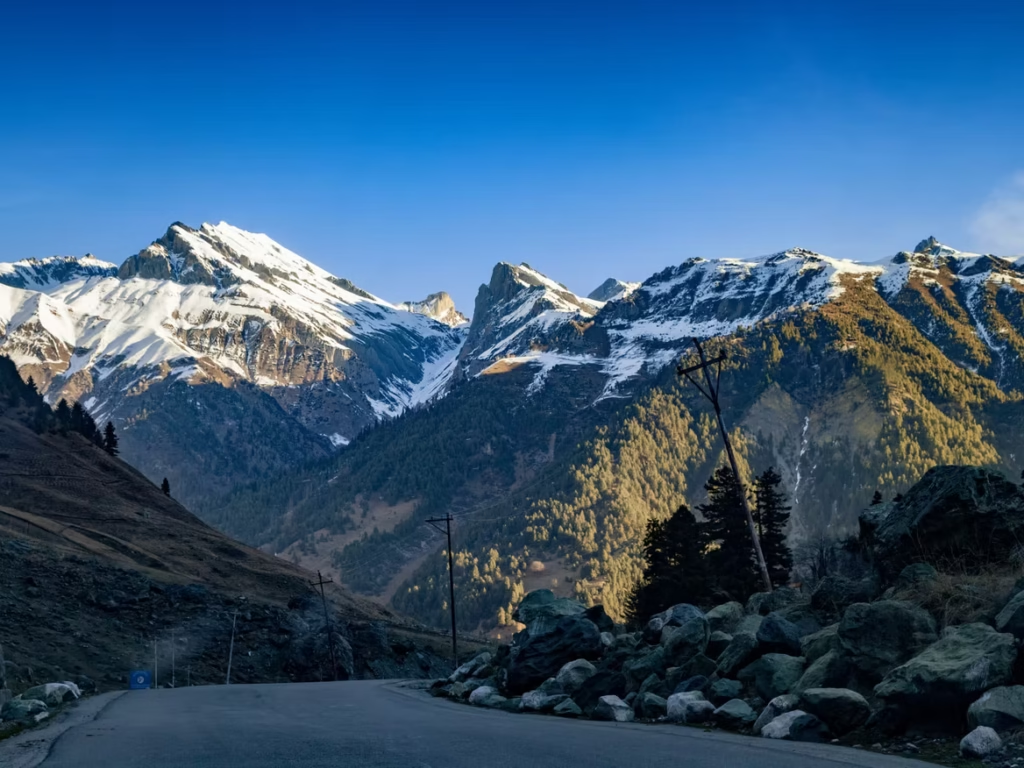
The road trip from Delhi to Manali is one of the best adventures in India. Imagine cruising along the winding highways with the towering Himalayas surrounding you; stopping at small dhabas for warm, buttery parathas; and opening the windows to let in the crisp mountain breeze. This isn’t just a drive, it’s an experience encompassing food, history, culture, and visually stunning landscapes. The distance from Delhi to Manali is about 470 km and can take anywhere between 10-12 hours. You will pass through picturesque towns in Himachal, see historic temples, and drive through scenic valleys. Smart planning will allow you to craft your Delhi to Manali itinerary into either an adventure packed with thrill or a well-deserved retreat. This guide outlines the best routes, breaks, packing advice, and safety tips for a road trip filled with beautiful scenery, food, and long-lasting memories. What’s in this blog Why Take a Road Trip from Delhi to Manali? Best Time to Travel Planning Your Route Packing and Preparing for the Trip Best Places and Stops on the Way Suggested Delhi to Manali Road Trip Itinerary Travel Essentials and Safety Tips Where to Stay Along the Route Why Plan with The Tarzan Way FAQs Final Thoughts Why Take a Road Trip from Delhi to Manali? Manali is one of the most loved hill stations in India; however, the adventure begins long before you reach the destination. If you drive from Delhi, you get to experience Scenic diversity – You go from Delhi with all its chaos, to flat farmland in Haryana and Chandigarh’s gardens to the mountains of Himachal. Freedom & flexibility – Stop where you want, eat the food that tempts you, and detour into remote villages. Unforgettable bonding – Long drives mean stories, laughter, memories, and experiences with your fellow travelers. Adventure factor – Hairpin bends, high passes, and spontaneous pitstops mean that the journey is as thrilling as the destination. Unlike a short easy flight, the road allows you to slow down and truly feel the spirit of Himachal. Best Time to Travel Timing really can impact your smooth roadway trip from Delhi to Manali. March–June – Great weather to experience and do fun activities. July–August – Torrential rains make the roads slippery and prone to landslides. No bueno. September–November – The weather is crisp, the air is clear and the crowd is smaller. December–February – A beautiful blanket of snow, but riskier driving option because of icy roads. If this is your first trip, I’d recommend a trip in March–June or September–November for a safer and comfortable trip. Planning Your Route The distance from Delhi to Manali is about 470 km, which can take 10-12 hours for a direct route. But the best part of this trip is to part it into a leisurely 3-5 days where you can visit towns along the way. Common Route Delhi → Murthal → Panipat → Ambala → Chandigarh → Bilaspur → Mandi → Kullu → Manali Suggested Stopovers Murthal – well known for parathas, and dhaba culture. Chandigarh – well known for architecture, gardens and museums. Kalka & Solan – great hillside views. Kullu – with apple orchards, temples, and river rafting. You will get the most food, culture, and relaxation on your trip by having 2-3 stopovers. Packing and Preparing for the Trip Packing smart makes the difference between a nice road trip and a stressful one. Things to consider: Clothes – lightweight cottons for the daytime, heavier jackets for the evening. Travel gear – sunglasses, hats, power banks for the trip, and car chargers. Snacks – buy dry fruits, sandwiches, some chips, and lots of water. Medical kit – buy basic medicines, motion sickness tablets, and band-aids. Car supplies – spare tyre, basic toolkit, torchlights, and extra fuel cans. Pro Travel Tips: Servicing of your car should be done one week prior to your trip (e.g. battery check, brakes check, and tyres check). Make sure to create playlists for the length of your trip, to keep your spirits high on longer stretches. Assign roles in the planning. Having a navigator, photographer and DJ will engage everyone. Best Places and Stops on the Way There are so many stops you can make while driving along the Delhi-Manali Highway. It’s full of places you will want to stop over! In and Around Delhi Sadar Bazaar – chaotic, colorful, and full of tasty street food. Chole Bhature breakfast – a classic North Indian kickstart. Murthal (NH44) Renowned for giant stuffed parathas with butter and lassi. Kurukshetra & Panchkula Kurukshetra temples – deep dive into India’s mythology. Nada Sahib Gurudwara – a peaceful spiritual stop. Chandigarh Explore the Rock Garden, Rose Garden, and museums. Perfect place for an overnight halt. Shimla & Kasauli (Optional detour) Colonial architecture, Mall Road, toy train rides. Approaching Manali Kullu – apple orchards, rafting in Beas River, temples. Solang Valley – adventure hub for paragliding and skiing. Rohtang Pass – if open, this snow paradise is a must-visit. In Manali Stroll along Mall Road. Visit Hidimba Devi Temple. Cozy up in local cafes with mountain views. Suggested Delhi to Manali Road Trip Itinerary Here’s a basic 5-day road trip plan: Day 1: Delhi → Chandigarh (250 km, approx. 5–6 hour drive). After a day of visiting Chandigarh’s gardens, stay overnight at a hotel. Day 2: Chandigarh → Shimla/Kasauli (90-120 km, approx. 3-4 hour drive). Explore Shimla or Kasauli with their beautiful hills and colonial architecture; stay overnight. Day 3: Shimla/Kasauli → Mandi/Kullu (180 km, 6–7 hour drive). See the beautiful scenic drives, apple orchards, and temples on this drive and stay overnight. Day 4: Kullu → Manali (40 km; 2 hour drive). Arrive in Manali; spend the day exploring Mall Road and Hidimba Temple. You can stay here two nights – the accommodation options are plentiful. Day 5: Around Manali → Take day trips from Manali to Solang Valley or Rohtang Pass (if open). Either way, there will be wonderful scenery and adventure. This trip can be done in
Top Budget Hotels in Manali for a Mountain Getaway

Manali has always been a destination for travelers who love the beauty of the Himalayas. Snow-capped mountains, lush valleys, pine trees, and the Beas River create the perfect picture. But here’s the best thing: you can enjoy this beauty on a budget. There are several top-rated hotels in Manali for a mountain vacation that are affordable with amazing comfort, good eating options, and welcoming hospitality – for a reasonable prize! So, whether you are traveling solo, with friends, a family trip, or on your honeymoon, there is a great blend of affordable stay in Manali. In this blog, we will share some of the best budget hotels in Manali near Mall Road, budget places to stay in peace of mind, and other awesome backpacker hostels. Plan your trip with The Tarzan Way. What’s in this Blog? Why Choose Budget Hotels in Manali? The Orchard Greens Hotel Hotel Snow Valley Resort Zostel Manali Hotel Tibetan Classic Johnson Lodge Manali Tips to Choose the Best Budget Hotels in Manali Why Stay Near Mall Road? Using The Tarzan Way for Smarter Travel Planning FAQs Final Thoughts Why Choose Budget Hotels in Manali? Budget travel is not synonymous with compromised quality. As a matter of fact, most of the negatively reviewed budget hotels to stay in Manali have: Ideal locations – close to Mall Road, Hadimba Temple, and sleepy away from the hustle and bustle are some of the loveliest villages in Manali as Vashisht. Modern amenities – including Wi-Fi, room service, and travel assistance. Quality food – Indian cuisine, Tibetan food including momos and thukpa. More than this, the chances to experience the local activities – including treks, temples and adventure sports available in Manali like paragliding, and rafting. Budget hotels to stay in Manali that families, couples and backpackers take, about their family trips, or honeymoons, budget accommodation is an updated way to experience the magic of the mountains at 50% off. The Orchard Greens Hotel If you’re searching for Manali budget hotels near Mall Road, The Orchard Greens Hotel tops the list. Location: Just minutes away from Hadimba Temple and Manu Temple. Room Rates: From ₹1360 per night. Amenities: Free Wi-Fi, LCD TVs, attached bathrooms, travel desk, fitness center, and a rooftop with breathtaking views. Why Stay Here? Central location makes it easy for couples and small families to explore the town. Hotel Snow Valley Resort Looking for top budget hotels in Manali for a mountain getaway for family? Hotel Snow Valley Resort offers peace and rejuvenation. Location: Nestled in Old Manali, surrounded by gardens and quiet trails. Room Rates: From ₹1500 per night. Unique Features: Floor-to-ceiling windows, yoga sessions, massages, vegetarian meals, and shuttle service to Mall Road. Nearby Adventures: River rafting in the Beas River and paragliding flights. Zostel Manali No list of best budget hotels in Manali is complete without mentioning Zostel – a favorite among backpackers. Location: Near Mall Road and also in Old Manali, Vashisht, Burwa, Pangan, and Dhobi. Room Rates: Beds from just ₹500 per night. Vibe: Colorful dorms, lively common spaces, terrace café, games, and karaoke nights. What’s Special: Free kitchen access, budget-friendly stays, and the chance to connect with travelers worldwide. Hotel Tibetan Classic For travelers wanting something culturally immersive, Hotel Tibetan Classic is an amazing choice. Location: The peaceful village of Vashisht. Room Rates: From ₹1500 per night. Ambience: Ladakhi-style interiors, woodwork, Buddhist murals, and garden café with mountain views. Special Experiences: Butter tea, Tibetan cuisine (momos, thukpa), wellness sessions, and massages. Johnson Lodge Manali One of the best budget hotels in Manali near Mall Road, Johnson Lodge blends comfort with affordability. Location: Central Manali, walking distance to Mall Road. Room Rates: From ₹1000 per night. Amenities: Complimentary breakfast, Wi-Fi, safety lockers, laundry, and a restaurant serving Indian & continental dishes. Why Stay Here? A convenient base for sightseeing while still enjoying a cozy retreat. Tips to Choose the Best Budget Hotels in Manali For Families: Look for budget hotels in Manali for family that provide larger rooms, safety, and kid-friendly food options. For Honeymooners: Choose the best budget hotels in Manali for honeymoon with scenic views and privacy. For Backpackers: Go for dorm-style hostels like Zostel to save money for activities. Near Mall Road: The best budget hotels in Manali near Mall Road are convenient for shopping, food, and nightlife. Cultural Stays: Try unique stays like dharamshala in Manali for stay to experience spirituality and culture. Why Stay Near Mall Road? Staying near Mall Road gives you easy access to: Street shopping for woolens and handicrafts. Local eateries and cafés. Quick access to taxis and bus stands. Proximity to tourist spots like Hadimba Temple. Using The Tarzan Way for Smarter Travel Planning Choosing where to stay in Manali can be overwhelming with so many options. That’s where The Tarzan Way makes a difference. Get personalized hotel recommendations. Build your own custom itinerary. Balance your budget with comfort. If you’re planning longer adventures, check out: Manali to Leh: The Ultimate High-Altitude Road Trip in India The Ultimate Manali Experience: Nature, Adventure, and Culture Exploring the Mountains: A Guide to the Main Attractions Along the Shimla-Manali Highway How to Plan the Perfect Delhi to Manali Road Trip The Ultimate Manali Travel Guide: How to reach and get around the mountain town With The Tarzan Way, you don’t just book hotels—you design your mountain getaway smarter. FAQs 1. Which are the top budget hotels in Manali for a mountain getaway? Some of the best include The Orchard Greens Hotel, Hotel Snow Valley Resort, Johnson Lodge, Hotel Tibetan Classic, and Zostel Manali. 2. What are the best budget hotels in Manali near Mall Road? Johnson Lodge and The Orchard Greens Hotel are excellent choices near Mall Road. 3. Are there budget hotels in Manali for family trips? Yes, Hotel Snow Valley Resort and The Orchard Greens Hotel are great for families. 4. Which are the best budget hotels in Manali for honeymoon couples? Hotel Tibetan Classic in Vashisht and Hotel Snow Valley Resort
The Ultimate Manali Travel Guide: How to reach and get around the mountain town.

One of the few mountain towns that wins over every tourist’s heart is Manali. Manali, which is proudly located in the Kullu Valley of Himachal Pradesh and has the Beas River running through the center of it, combines cultural diversity with stunning scenery. Manali never lets you down, whether you’re there for trekking, snow sports, temple visits, or just to enjoy a hot chocolate in a quaint café overlooking the mountains. However, “How do I get to Manali, and once I’m there, how do I get around?” is one of the most common questions tourists have before going. Everything you need is covered in this ultimate Manali travel guide, from the best routes to get to this mountain paradise to the most practical and efficient ways to get around once you’re there. Plan your dream trip to Manali by AI powered Manali itinerary planner. What’s in this Blog? Why Visit Manali? Best Time to Visit Manali How to Reach Manali Reaching Manali by Road Reaching Manali by Train Reaching Manali by Air How to Get Around Manali Local Buses Taxis and Cabs Two-Wheeler and Car Rentals Walking Around Town Tips for Smooth Travel Using The Tarzan Way for Smarter Planning FAQs About Reaching and Getting Around Manali Final Thoughts Why Visit Manali? Manali is an experience rather than merely a town. Imagine walking through apple orchards, opening your window to view snow-capped peaks, and waking up to the crisp mountain air. Manali is ideal for all types of tourists because every area has a distinct vibe: Adventure Seekers: Paragliding over snowfields, river rafting in the Beas, or skiing in the Solang Valley. Couples and honeymooners: Couples can enjoy quiet walks in Old Manali, cozy lodgings, and candlelit dinners by fireplaces. Families: Kid-friendly attractions like Hadimba Temple and Vashisht Hot Springs, family-friendly lodging, and a safe atmosphere. Backpackers: There are lots of like-minded travelers to meet, lively cafés, and inexpensive hostels. For a complete picture, check out The Ultimate Manali Experience: Nature, Adventure, and Culture!!. Best Time to Visit Manali Summer (March – June): Ideal for sightseeing, trekking, and river activities. Days are pleasant (10–25°C). Monsoon (July – September): The valley turns green and beautiful, but heavy rains can cause landslides. Travel with extra caution. Winter (October – February): Temperatures drop below zero, but snowfall transforms Manali into a wonderland. Perfect for honeymooners and snow lovers. How to Reach Manali Getting to Manali depends on your budget, time, and comfort preferences. Here are the main routes: Reaching Manali by Road Road journeys are the most popular way to reach Manali. From Delhi: Around 550 km, 12–14 hours by car or bus. From Chandigarh: 310 km, around 8–9 hours. By Bus: Luxury Volvos and Himachal Roadways buses leave daily from Delhi, Chandigarh, and Shimla. Prices: ₹1000–₹1500. By Car/Self-Drive: Perfect for those who love scenic drives. Popular stops include Mandi, Kullu, and Kasol. Pro Tip: Winter driving requires snow chains and caution. If road trips excite you, read How to Plan the Perfect Delhi to Manali Road Trip for a complete guide. Reaching Manali by Train Manali doesn’t have a railway station, but you can combine train + road: Joginder Nagar Railway Station (163 km): Smallest and nearest station, limited trains. Chandigarh Railway Station (310 km): Best choice, with regular trains from Delhi, Mumbai, and Kolkata. Ambala Cantt (340 km): Another good option for major train routes. From these stations, taxis or buses connect you to Manali. Reaching Manali by Air The quickest way is flying into Kullu-Manali Airport (Bhuntar Airport): Distance: ~50 km from Manali. Connectivity: Delhi and Chandigarh via Air India and smaller airlines. Taxi cost: ₹1500–₹2000 from Bhuntar to Manali. If direct flights are limited, fly to Chandigarh or Delhi and continue by road. How to Get Around Manali Once you arrive, moving around Manali is relatively easy. Here are your best options: Local Buses Cheapest mode of transport. Connects nearby attractions like Naggar, Kullu, and Solang Valley. Great for budget-conscious and solo travelers. Taxis and Cabs Readily available at Mall Road taxi stands. Comfortable for families and honeymooners. Best for day trips to Rohtang Pass, Solang Valley, and Kasol. Always negotiate or use prepaid counters. Two-Wheeler and Car Rentals Adventure seekers often rent scooters or bikes (₹500–₹1200/day). Cars are available for self-drive or with a driver. Driving gives freedom to stop at lesser-known spots like Sethan Village or Jana Waterfalls. Explore more scenic routes in our blog: Exploring the Mountains: A Guide to the Main Attractions Along the Shimla-Manali Highway. Walking Around Town Mall Road and Old Manali are best explored on foot. Walking lets you enjoy cafés, handicraft shops, and music scenes at leisure. Great way to feel the town’s slow-paced, charming lifestyle. Tips for Smooth Travel Book in Advance during May–June and December–January. Carry Cash: Digital payments are common, but rural areas still depend on cash. Pack Smart: Layered clothing, power banks, and medicines. Travel Light: Mountain terrain isn’t friendly to oversized luggage. Check Weather: Always before booking road trips, especially in monsoon. Using The Tarzan Way for Smarter Planning Planning trips can be overwhelming with so many options. That’s why The Tarzan Way offers AI-powered travel planning: Personalized itineraries based on your budget and interests. Suggestions for budget hotels in Manali and transport options. Helps you balance cost, comfort, and experiences. Just like we simplify road trips such as Manali to Leh: The Ultimate High-Altitude Road Trip in India!!, we can make your Manali trip seamless. FAQs 1. What is the best way to reach Manali from Delhi? The most popular option is the overnight Volvo bus, which is affordable and comfortable. Self-driving offers flexibility but requires long hours. 2. Does Manali have a railway station? No, the nearest station is Joginder Nagar (163 km), though Chandigarh is a more reliable hub for onward travel. 3. How far is Manali from Delhi by road? It’s about 550 km, taking 12–14 hours depending on weather and traffic. 4. Which is the nearest airport to Manali? Bhuntar
Planning a Trip to Manali this Summer? Here’s What You Need to Know About the Weather

Tucked away in the Himalayas, Manali is one of the most popular summer getaways for Indians. When the plains heat up, this hill town is cool relief and a mix of scenic beauty and adventure. During the summer, you should expect anything from sunny mornings to misty rains to thunderstorms at any given moment.With a bit of planning, you can still get the most out of your Manali trip. This guide will tell you everything you need to know about Manali weather, including temperatures, rainfall amounts, what to pack, things to do in Manali by season, and the best time to visit Manali so that you can enjoy your holiday rain or shine. You can also plan your trip to Manali with The Tarzan Way. What’s in this blog Manali Weather: An Overview Manali in Summer (April–June) Manali in Monsoon (July–September) Manali in Winter (December–February) Manali in Spring (March–April) Best Time to Visit Manali What to Pack for Your Trip Things to Do in Manali by Season Suggested Itinerary for Manali FAQs Final Thoughts Manali Weather: An Overview At an altitude of nearly 2,050 meters, the weather in Manali can be dramatically different from season to season. Summertime may bring comfortable temperatures between 15°C and 25°C, but the high altitude makes the sun feel stronger. The monsoon usually starts at the end of June, with sudden showers. This unpredictable Manali weather means travelers must pack efficiently during the summer—they should carry light clothes for hot sunny days, a jacket for breezy evenings, and an umbrella for unexpected showers. Manali in Summer (April–June) Visiting Manali in summer is the most popular choice. Daytime temperatures are pleasant (15–25°C), perfect for an outdoor getaway. Humidity starts creeping in by May, but monsoon hasn’t fully arrived. Pros: Clear skies and mountain views. Ideal for trekking, paragliding, rafting, and camping. Cafes and markets are lively for food and shopping. Cons: Rain may arrive by late June. Rohtang Pass might still be closed in early April. Planning a road trip? Read: How to Plan the Perfect Delhi to Manali Road Trip. Manali in Monsoon (July–September) The monsoon season creates a verdant green paradise in Manali, but it also brings heavy rainfall that influences travel accessibility. Humidity will be high at levels between 75%–80% and landslides may occur frequently. Pros: Fewer travellers and hotel prices are discounted. Rivers and waterfalls could be flowing at their most spectacular. Great time for budget travelers. Cons: The roads may be prone to landslides and blockages. Outdoor adventure activities will be limited. Fog could obscure views. Want more? Check out our Manali Travel Guide for some safety tips during the monsoon season. Manali in Winter (December–February) In winter, Manali becomes an enchanting snow-laden land. The temperature fluctuates from -5°C during the night to 10°C in the day. Pros: Skiing, snowboarding, and snowmobiling at the Solang Valley. Fewer tourists, and appealing hotel offers. Charming sceneries with snow-clad mountains. Cons: Heavy snow can make the roads impassable. Limited connectivity to remote areas. Very cold and necessitate heavy winter wear. Manali in Spring (March–April) Spring brings moderate weather with highs of 18°C to 25°C, but evenings can still be chilly. Expect light showers and even snow at higher altitudes. Pros: Blooming orchards and colorful valleys. Off-season discounts on hotels. Ideal time for temple visits and easy treks. Cons: Sudden rain or snow at higher points. Some activities remain closed until summer. Best Time to Visit Manali The “best” time depends on your travel style: Summer (April–June): Adventure activities, family trips. Monsoon (July–September): Budget-friendly, lush scenery. Winter (December–February): Snow sports and cozy retreats. Spring (March–April): Flowering orchards, festivals, and fewer crowds. Planning a romantic escape? Check out our Manali Honeymoon Guide. What to Pack for Your Trip Summer: Light cottons, hats, sunscreen, trekking shoes, and a light jacket for evenings. Monsoon: Raincoat, umbrella, waterproof boots, quick-dry clothing. Winter: Heavy woolens, thermals, snow boots, gloves, moisturizers. Spring: Layered clothing, compact umbrella, light sweaters for evenings. Tip: Always carry a basic medical kit and reusable water bottles. Things to Do in Manali by Season Summer (April–June): Paragliding at Solang Valley, rafting in the Beas River, trekking (Hampta Pass, Bhrigu Lake), riverside camping. Monsoon (July–September): Temple visits (Hadimba, Vashisht), cozy cafes, local food, indoor relaxation. Winter (December–February): Skiing, snowboarding, sledding, zorbing, trekking (Chadar trek for experts). Spring (March–April): Nature walks, birdwatching, apple orchards, temple visits, cultural festivals. These activities highlight some of the best things to do in Manali no matter when you visit. Suggested Itinerary for Manali (4 Days) Day 1: Explore Mall Road and Hadimba Temple. Day 2: Adventure sports in Solang Valley. Day 3: Visit Naggar Castle, Vashisht hot springs, and Old Manali cafes. Day 4: Optional trip to Rohtang Pass (if open) or explore Kullu. This plan covers top places to visit in Manali, giving you a balanced mix of adventure and relaxation. FAQs Q. Is Manali hot in summer? No, summers are cool with 15°C–25°C temperatures, perfect for sightseeing. Q. Does it rain in Manali in June? Yes, occasional showers start by late June as monsoon approaches. Q. Which month is best for Manali? April–June for adventure, December–February for snow. Q. Is May good for Manali? Yes, sunny days, pleasant evenings, and open adventure activities. Q. Does Manali get snow in summer? Not in town, but higher passes may still have snow till May. Q. Is Manali crowded in June? Yes, June sees peak tourist crowds before monsoon starts. Q. What to wear in Manali in May? Light cottons by day, a jacket for cool evenings. Q. Is Manali safe in July? July is monsoon season; heavy rains can disrupt travel. Q. Does it snow in Manali in December? Yes, December usually brings snowfall, especially after mid-month. Q. Is January a good time for Manali? Yes, but pack heavy woolens; expect snow and sub-zero nights. Q. How many days are enough for Manali? 3–4 days are enough for sightseeing, cafes, and adventure. Q. Is Rohtang open in June? Yes, Rohtang Pass usually



